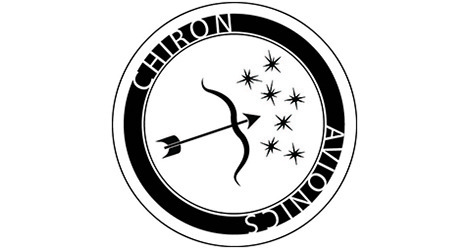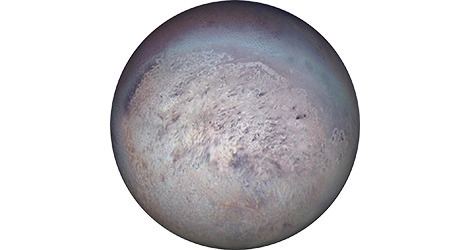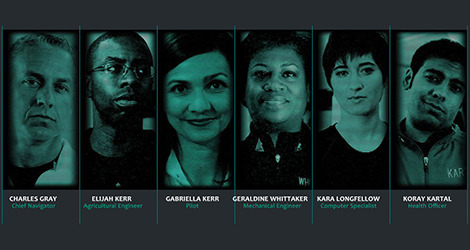The Argos1
Backstory
Chiron Avionics was formed to fill the void of human space flight in the early decades of the 21st century. Originally a small not-for-profit of highly skilled and motivated individuals, Chiron Avionics has humble roots. The first launch success took humans back to Earth's moon where a small ground station was settled on the surface. Eventually, Chiron Avionics grew and established a number of way stations across the solar system. Some of them were launched unmanned and continue as stockpiles of supplies and communication arrays, but other are now staffed with semi-permanent residents.
It was decided some years back that exploration beyond our solar system would require a larger, established ground base on the outskirts of the solar system. It is with this in mind that Chiron Avionics set its sight on Triton, a moon of Neptune.
Triton is both a scientifically interesting and a strategic choice for a surface-based station. The moon is the largest of the satellites orbiting Neptune and is the only large moon in the solar system with a retrograde orbit, meaning that it obits its planet in the opposite direction of the planet's own rotation. It is thought that Triton itself was orbiting the sun at one point but was captured by Neptune's gravitational field. In addition to being an oddity in the solar system, its orbit around Neptune makes Triton one of the furthest orbiting bodies away from the sun; therefore, providing an excellent launch point for future extra-solar system missions.
The moon itself provides many challenges but also has key characteristics that make a permanent settlement possible. Triton has ample water available under its surface of frozen nitrogen. Chiron Avionics and their investors believe this water could be mined and used with minimal difficulties. The primary challenge to establishing any type of permanent or semi-permanent structure on any outer solar system body is the temperature. Triton averages ~400 F and the solar energy that reaches the moon is not sufficient to be used by solar arrays. Therefore, alternate energy sources are needed. Scientists at Chiron Avionics have used the expertise of others and decided to invest in nuclear energy generation. This has served them well and is now the standard for all extra-planetary habitats.
Although little is known about living on Triton, in recent years much data has been gathered from the surface of the moon thanks to six simultaneously launched scientific rovers. These six rovers have been consistently sending back data about the surface and subsurface of Triton for the past eight years.
Chiron Avionics made the decision three years ago to send an advanced team to the surface of the moon to establish the first semi-permanent structures. The vessel that would carry these intrepid adventurers was named the Argos and the mission to the surface of Triton, Argos1.
It took three years to construct the Argos and assemble the crew for the journey. Thanks to advances in electromagnetic field generation, radiation concerns from long-term space flight have been reduced making the nearly 20 year round trip mission possible. The Argos is the largest and most sophisticated craft of its kind, with a length nearly twice as long as the previous generation ship and a dual nuclear reactor fuel system to sustain the crew both on the Argos and on the surface of Triton. On-board Argos, the crew will not only find living quarters, but an agricultural habitat, a recreational facility, two large storage facilities and an operations center. Argos is now complete and plans for launch are nearly finished. The upcoming launch will be the first stepping-stone to exploring other planetary systems and the secrets they hold.
The Argos is an amazing vessel and Chiron Avionics has chosen an international crew that is sure to bring success to the mission. At the helm are the Core Six: Charles Gray - Navigator, Gabriella Kerr - Pilot, Elijah Kerr - Agricultural Engineer, Kara Longfellow - Computer and Communications Specialist, Geraldine Whittaker - Mechanical Engineer, and Koray Kartal - Health Officer. These six have the skills and experience necessary to ensure a safe and successful trip. All should admire them for their willingness to lead the expedition and give nearly 20 years of their lives to scientific discovery. May we always remember the word of Scott Carpenter to John Glenn, "Godspeed."



